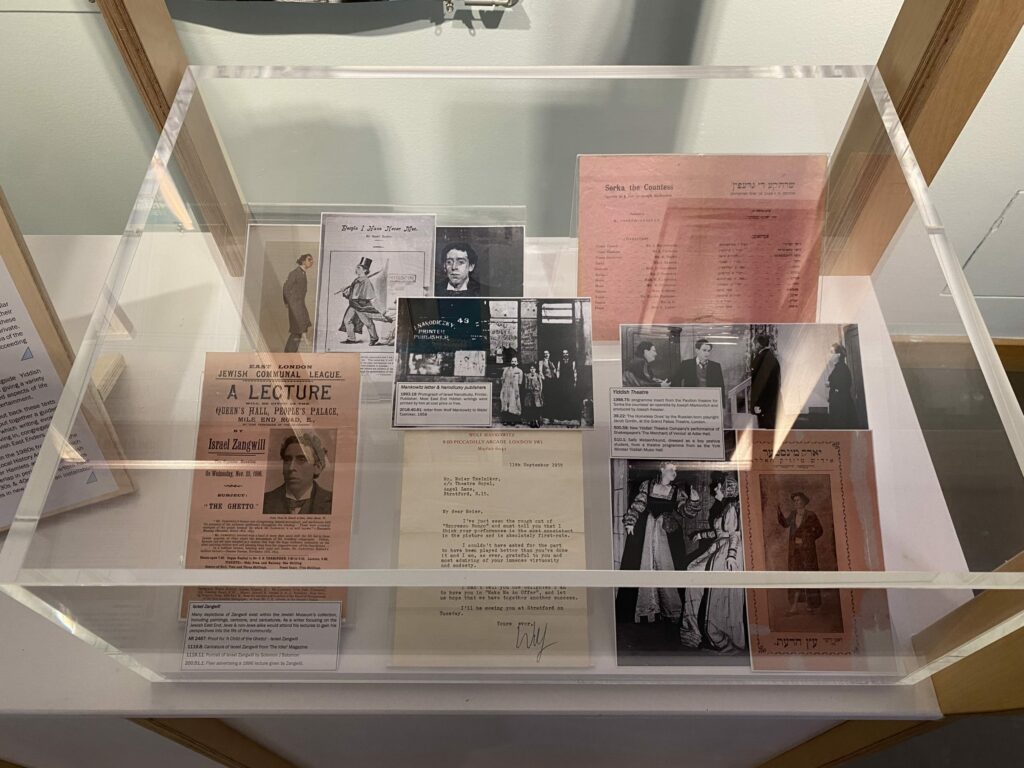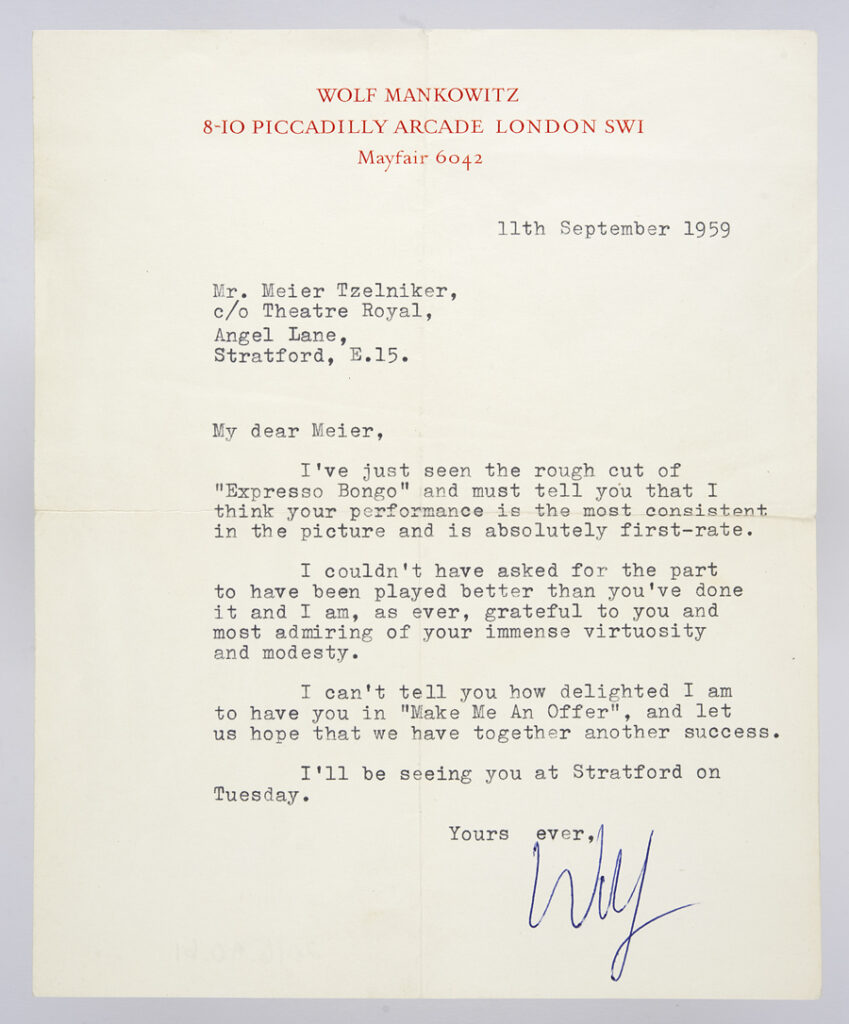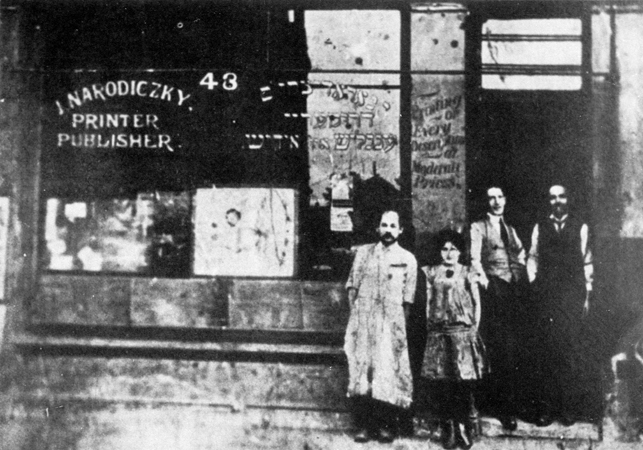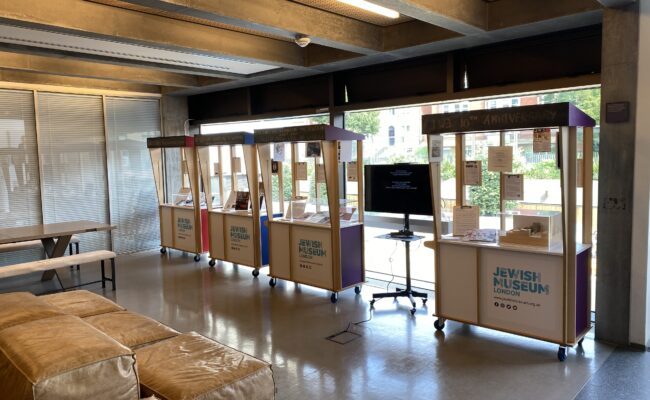A conversation between Jewish Museum London, Nadia Valman & Vivi Lachs, leads on the Making and Remaking the East End Project

Museum: How did this project come about and what’s your involvement?
Nadia: I’m professor of urban literature at Queen Mary University of London and I am researching the English-language literature of the Jewish East End, which goes right back to Israel Zangwill in the 1890s, and forward to writers like Arnold Wesker and Wolf Mankowitz in the 1950s and 60s. I’m interested in the intersections between English-language literature and the Yiddish culture of the Jewish East End. We both thought it would be interesting to look at how these two cultures, which happened in the same place, over the same time period, speak to each other.
Vivi: I’m a research fellow at Queen Mary University. I focus on Yiddish popular culture, how people wrote about the times they were living in, and their impressions of the East End. Both English and Yiddish writers talk about these intersections, be it within families, within the community, in public or in private. Nadia and I realised that the material we were studying presents an idea of the East End that is shaped by this literature and then reshaped over succeeding generations.
Museum: It’s a project involving a number of strands, right?
Vivi: One strand is London’s Yiddish theatre, which alongside Yiddish performances of Shakespeare, contains local plays and songs giving a variety of perspectives on the immigrant East End. Writers described aspects of life with satire, humour and blended it into serious or comic entertainment.
Nadia: We also wanted to see what would happen if we put back these texts into the places where they were being written. So we’ve put together a guided walk through Spitalfields which looks at the ways in which writing evokes, discusses and explores the spaces that people were living in, congregating in, and the institutions that were shaping the lives of Jewish East Enders.
We’ve also digitised oral history accounts recorded in the 1980s from both the Jewish Museum’s collections and Tower Hamlets Local History Archives, which includes the earliest Bengali immigrants to Tower Hamlets as well as Jewish migrants to East London. These more or less overlap in period, with memories of migration stories to East London in the 1930s & 40s. Sound artists have been working with us to interpret these stories in new ways for an installation in the Archives this summer
Selecting an object
Museum: Which items have you decided to display?
Nadia: There’s a set of different images of Israel Zangwill, the most famous Jew of this period. He first became a celebrity author for the novel, “Children of the Ghetto”, published in 1892. This was the first ever English language novel about the immigrant experience from the inside. Zangwill himself, a child of immigrants, had grown up in the East End. He had a remarkable life, graduating with a degree from London University despite an extremely poverty-stricken background; he was absolutely unlike any other writer of his period in this respect.
The cartoon with him in a top hat with two little urchins pulling at his coat-tails expresses the idea that Zangwill has moved beyond the East End, but is being pulled back to it by these two kids; so despite his celebrity he’s pulled back to his roots. Zangwill was very critical of the East End immigrant culture that he came from, and regarded it as narrow-minded, but he also felt strongly that it had a kind of unique poetry and beauty, particularly the religious culture that he remained attached to.
The speech on the Ghetto at the People’s Palace, Mile End, was a companion piece to his novel. This talk (for both Jews and non-Jews) gave a rapid summary of Jewish history explaining how Jews came to live in ghettos in Europe and in turn how the influence of ghetto life continued to shape their life in England.

Nadia: There’s also this letter by Wolf Mankowitz, a writer who was also born in the East End, and unlike any of the other East End writer of his generation, went to Cambridge University gaining an English degree. He had a strong affinity for Yiddish literature and for the heritage that Zangwill represented for him. Although he barely knew Yiddish at all, he still felt this was an important heritage not to be lost. This letter shows he’s delighted to be involved with the celebrated Yiddish theatre actor Meier Tzelniker.
Vivi: Meier Tzelniker was a Yiddish actor and an immigrant to London with his family. His daughter Anna also acted on the London Yiddish stage. The Merchant of Venice production in the photo is from a performance in 1946 at the New Yiddish Theatre in Adler Street in a new translation by Abish Meisels. The play had good reviews from the English press which focused on how the character of Shylock was not toned down in Tzelniker’s portrayal.
There were a number of reading rooms in the East End, both Jewish and English. This photo shows Yiddish newspapers, which even local English libraries provided for the many Jews in the area. The Reading Rooms allowed individuals to continue their cultural, political & general education which they may have missed out on between moving between countries and having to make a living in London.
Nadia: The press was one means by which they kept abreast of what was going on in the world. It connected them to their families and political circles back home.

Vivi: Nadoriczky Printers from the late 1890s did two things; he published both Yiddish and Hebrew material. The majority of the Yiddish writers were being printed by him and he was a very generous person agreeing to do stuff for free – A lot of people got published because of him.
Vivi: Sally Weisenfreund, an actor and singer in the popular Yiddish theatre, features on this programme dressed as an orthodox hasidic man. The programme is for a performance at the York Minster Music Hall in Philpot Street. Yiddish theatre was polarised between high art, as seen in the Merchant of Venice, and popular theatre. But lower than the low was the Yiddish music hall. The song Weisenfreund is singing translates as “The tree of knowledge”. The song itself is lost but the title alludes to knowing the difference between right and wrong, and is most likely a cheeky song with a sexual innuendo. At the same time as making comments about the position of women, it may also be poking fun at Hasidim.
————————————————————————————————————
For more information visit: www.qmul.ac.uk/makingthejewisheastend/
